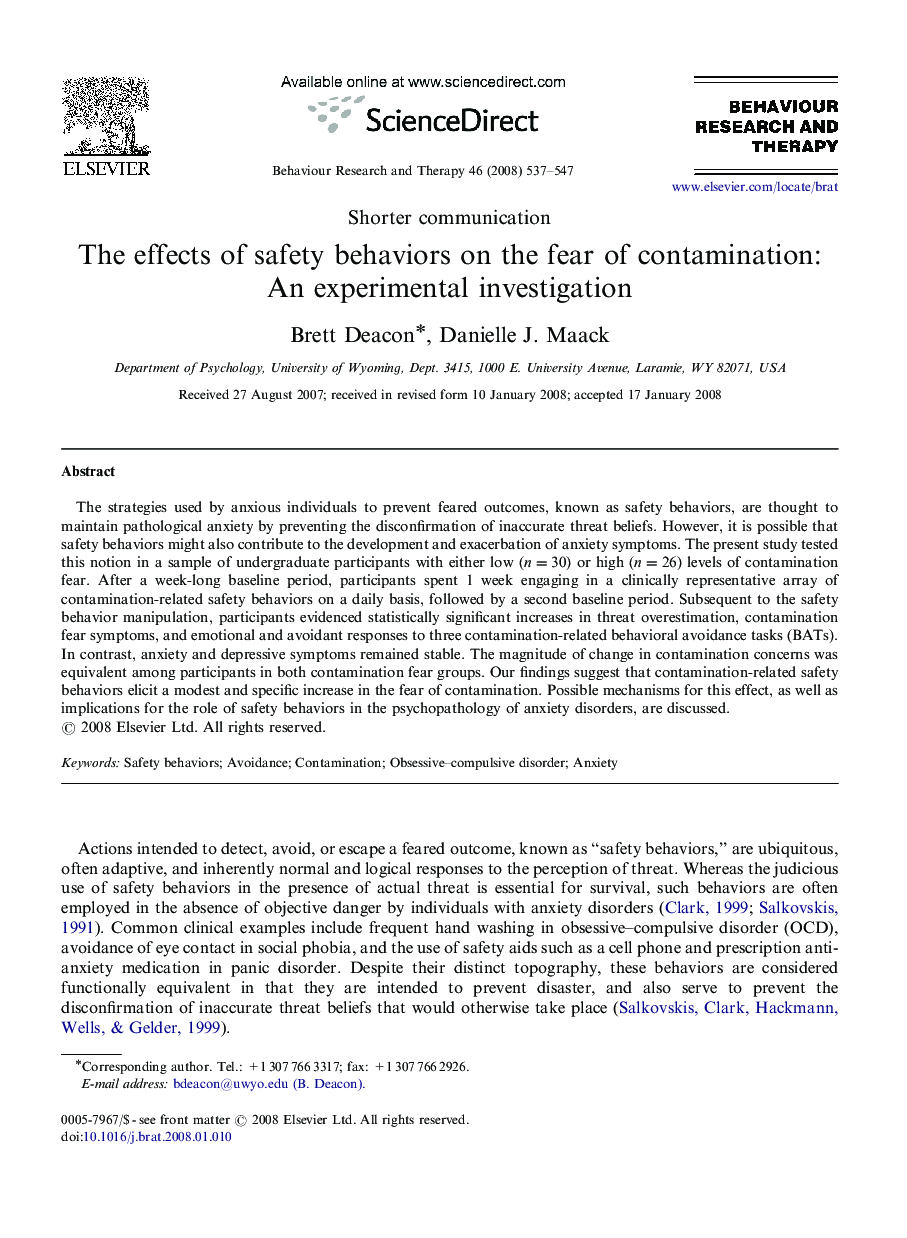| Article ID | Journal | Published Year | Pages | File Type |
|---|---|---|---|---|
| 902273 | Behaviour Research and Therapy | 2008 | 11 Pages |
The strategies used by anxious individuals to prevent feared outcomes, known as safety behaviors, are thought to maintain pathological anxiety by preventing the disconfirmation of inaccurate threat beliefs. However, it is possible that safety behaviors might also contribute to the development and exacerbation of anxiety symptoms. The present study tested this notion in a sample of undergraduate participants with either low (n=30) or high (n=26) levels of contamination fear. After a week-long baseline period, participants spent 1 week engaging in a clinically representative array of contamination-related safety behaviors on a daily basis, followed by a second baseline period. Subsequent to the safety behavior manipulation, participants evidenced statistically significant increases in threat overestimation, contamination fear symptoms, and emotional and avoidant responses to three contamination-related behavioral avoidance tasks (BATs). In contrast, anxiety and depressive symptoms remained stable. The magnitude of change in contamination concerns was equivalent among participants in both contamination fear groups. Our findings suggest that contamination-related safety behaviors elicit a modest and specific increase in the fear of contamination. Possible mechanisms for this effect, as well as implications for the role of safety behaviors in the psychopathology of anxiety disorders, are discussed.
